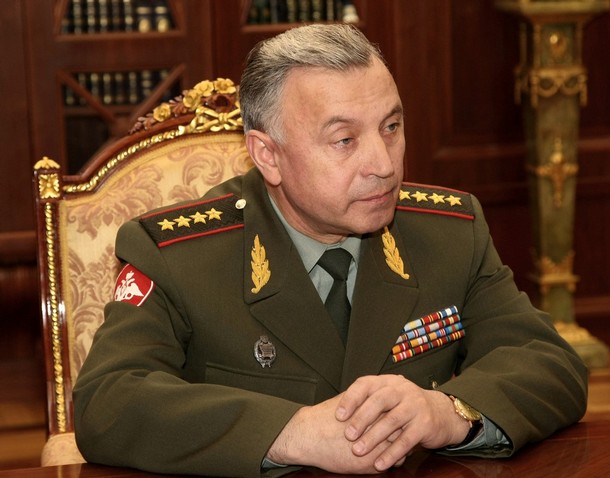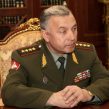
WILL MORE MONEY HELP BUY MORE MODERN WEAPONS?
Publication: Eurasia Daily Monitor Volume: 5 Issue: 179
By:

The 27,000-strong Georgian military is a 40th the size of the Russian military of over one million. Only several thousand solders from each side were directly involved in the war last month, which lasted three days before the Georgian forces were ordered to withdraw. Russia emerged victorious, taking full control of the Georgian breakaway regions of Abkhazia and South Ossetia; but this short war revealed serious deficiencies in the arming, training, and battle readiness of the Russian military. Last week at a special meeting in the Kremlin on military development, President Dmitry Medvedev announced that new weapons would be procured and developed and soldiers’ pay and battle readiness increased. “We need modern, effective armed forces …because of recent problems, including Georgia’s aggression and its continued militarization,” Medvedev announced. “This is the highest state priority in the coming years” (www.kremlin.ru, September 11).
It would seem that defending Russia against a tiny neighbor, no matter how “aggressive and militarized” it may be, could not be that serious a challenge, taking into account the difference in the size, strength, and potential of the foes. Medvedev’s declaration of an arms race, presumably with Georgia, as a “highest state priority” sounds like ridiculous propaganda overkill. But the deficiencies in Russia’s military are real, and its generals are clamoring for new weapons and more money. If the threat of “Georgian aggression” can help increase defense spending and procurement, it would be a good response to the presumed threat coming from NATO and the United States.
A concept reflecting new military threats will be produced for developing the Russian armed forces, announced the top military commander, Chief of General Staff General Nikolai Makarov: “As a priority we must develop new precision weapons, satellites, air defenses, and the air force” (RIA-Novosti, September 10). The army chief, General Vladimir Boldyrev, directly commanded the joint forces that invaded Georgia from headquarters in Vladikavkaz, North Ossetia. Boldyrev announced that the fighting revealed two main deficiencies in the tank forces: bad communications and bad command systems (RIA-Novosti, September 13).
The Russian military did not have a single spy drone in the sky, did not know for certain where the enemy was, and could not use precision weapons effectively. Until the Georgians retreated, Russian forces could not suppress Georgian artillery. The Russian Air Force did not manage to provide effective battlefield air support or reliable intelligence information because of Georgian anti-aircraft fire that shot down, according to Russian sources, seven bombers, including a strategic Tu-22M3 Backfire. According to the military, the Georgians used Buk-M1 anti-aircraft missiles, obtained from Ukraine (Vedomosti, September 12).
The Russian generals are making no secret of the shortfalls and problems their forces encountered during the invasion of Georgia, apparently hoping that this will help lobby for increases in defense spending. The tactic seems to have been at least partially successful. Prime Minister Vladimir Putin has announced substantial spending increases for 2009. Defense spending is planned at $50 billion, an increase of 27 percent over 2008. National security spending in 2009 will be $43 billion, an increase of 32 percent over 2008. National security includes the budgets of Russia’s federal law enforcement, Interior Ministry forces, and intelligence services—the former KGB (Interfax, September 16).
The increases in spending are substantial, but will they help refurbish the military? In 2000 when Putin came to power, defense spending was $5 billion and has grown by some 10 times since then, but the solders who invaded Georgia were armed exclusively with old weapons of Soviet stock, produced in the 1970s or 1980s. Fortunately for them, the Georgians were also armed mostly with the same equipment. Some Georgian weapons were partially modernized, but the Russians outnumbered and outgunned them.
Experts express doubts that the increase in defense spending will result in a major modernization of the military and predict that the money may be misappropriated (Nezavisimaya Gazeta, September 15). The Russian defense industry today is in a crisis, its technology outdated, its well-trained workforce old and shrinking, and its capability to make new weapons withered away. Mikhail Dmitriev, the director of the Federal Service on arms trade, announced last month that there were many potential customers for Russian arms in Asia, Africa, and Latin America; “but our defense industry does not have reserve production capability, so they have to queue” (RIA-Novosti, August 5).
With no reserve capability and Defense Ministry orders competing with export contracts, increases in procurement spending will not lead to any production growth. It is a seller’s market with low quality, scarcity, and super high inflation. Defense industry cooperation with the West and the opening of Russia’s procurement market to Western bidders could change the situation, but in the present semi-Cold War climate, this is unfeasible.




